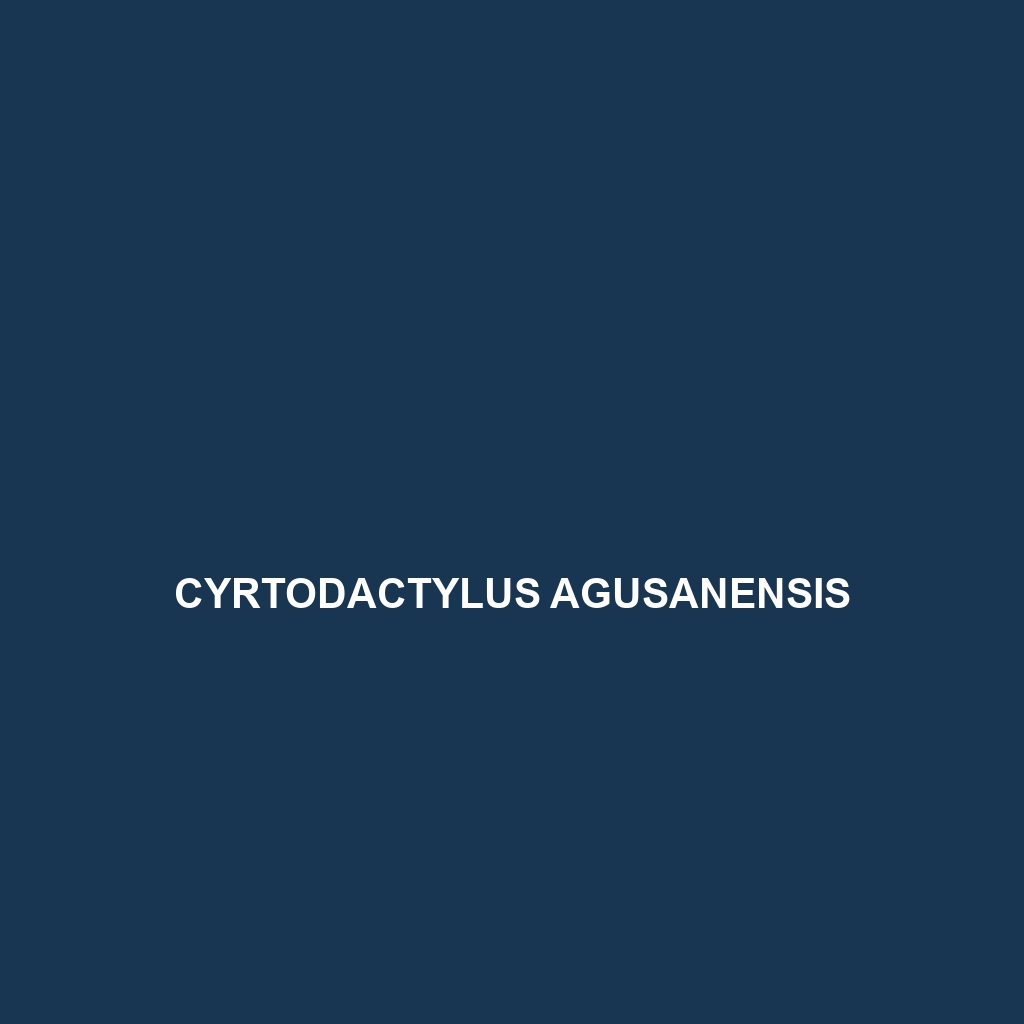Cyrtodactylus agusanensis: A Detailed Species Description
Common Name: Cyrtodactylus agusanensis
Scientific Name: Cyrtodactylus agusanensis
Habitat
Cyrtodactylus agusanensis is primarily found in the lush tropical rainforests of the Philippines, specifically on the island of Mindanao. This gecko thrives in humid, forested areas, often inhabiting areas with substantial ground cover, such as leaf litter, rocks, and fallen logs. The species is typically located in elevations ranging from sea level to about 700 meters, showcasing its adaptability to various microhabitats within these ecosystems.
Physical Characteristics
Cyrtodactylus agusanensis is a medium-sized gecko, growing to an average length of 15 to 20 centimeters. Its distinctive coloration features a blend of earthy tones, primarily brown and gray, which provides excellent camouflage against the forest floor. The skin of this species is adorned with subtle spots and patterns, allowing it to blend seamlessly into its environment. Its elongated body, large eyes, and unique toe pads facilitate climbing and grasping various surfaces, making it adept at navigating its arboreal habitat.
Behavior
Cyrtodactylus agusanensis exhibits primarily nocturnal behavior, emerging at night to forage for food and explore its surroundings. During the day, it tends to remain hidden among the foliage and rocks, relying on its cryptic coloration for protection against predators. This species is known for its agile movements and ability to climb trees and other vertical surfaces, which is vital for both hunting and escaping threats.
Diet
The diet of Cyrtodactylus agusanensis mainly consists of small insects and invertebrates, including crickets, beetles, and ants. This insectivorous diet plays a crucial role in controlling pest populations within its habitat. The gecko employs a sit-and-wait strategy, using its excellent camouflage to ambush prey that ventures too close.
Reproduction
Cyrtodactylus agusanensis is oviparous, laying clutches of 1 to 2 eggs during the breeding season, which typically occurs during the rainy months. The eggs are often hidden under loose soil or decaying plant matter to protect them from potential predators. The incubation period lasts around 30 to 60 days, after which hatchlings emerge, already exhibiting miniatures of their adult coloration and behavior.
Conservation Status
Currently, Cyrtodactylus agusanensis is listed as “Vulnerable” by the International Union for Conservation of Nature (IUCN) due to habitat loss resulting from deforestation and land conversion for agricultural purposes. Protecting the remaining habitats of this species is crucial for its survival in the wild.
Interesting Facts
One fascinating aspect of Cyrtodactylus agusanensis is its ability to change skin color in response to environmental conditions, a trait that enhances its camouflage. Additionally, this species has been the subject of interest for researchers investigating the biodiversity of the Philippine islands.
Role in Ecosystem
Cyrtodactylus agusanensis plays a significant role in its ecosystem as both predator and prey. By feeding on insects, it helps maintain ecological balance in its habitat. In turn, it serves as a food source for larger predators, contributing to the energy flow within the food web. Its presence indicates a healthy, functioning ecosystem, highlighting the importance of conservation efforts for its survival.
